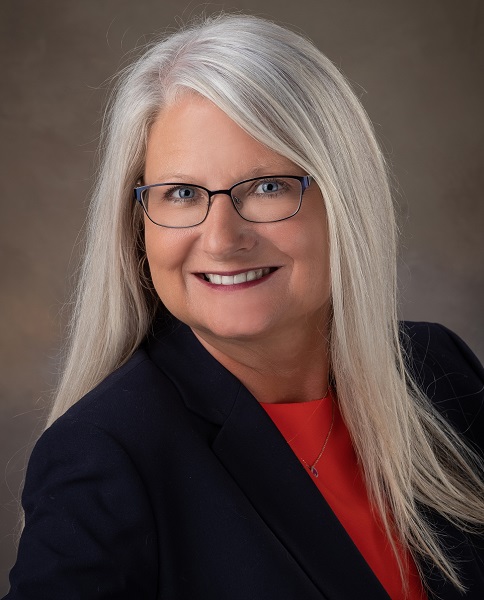 AHA-SOFT/SHUTTERSTOCK
AHA-SOFT/SHUTTERSTOCK
What does Batman (masked man who saves the world), Wonder Woman (defender of justice and the downtrodden) and Wile E. Coyote (can see the prize but it’s just outside of reach) have in common? They echo the feelings of any given fundraiser on any given day. And I dare say that includes those beautiful and rare fundraising creatures who got into the business on purpose.
Many folks in the fundraising and fund development business ended up here by accident. You know who you are. You accepted your dream job or built your dream organization. You are passionate and mission-driven. You are changing the world, everything is going great, but wait — now you need money. And don’t tell me it’s my job to raise it. I didn’t sign on for that.
Yeah, they rarely tell you that upfront. Or maybe raising money looks and sounds relatively easy — especially since you have a cause that is for the betterment of all, and society as a rule believes in your mission. So, they will just fund it. Nope, not quite.
I’ll briefly share my story and then we will get to business. My middle-school son came home from the community teen center he attended and said “Mom, you’ve got to save The ROCK — they’re going to close it.” Consider this comes from the sweet, innocent vantage point of a young man who over the years brought home abandoned squirrels and wounded ducks for Mom to “save.” He witnessed Mom be relatively successful. Well, except for the time with the kitten but that’s another story.

Beverlee Wenzel
Single mom with midlevel retail experience and two middle-school kids. Hear anything in that description about a nonprofit or fundraising? Squirrel, teen center, how different can they be? So I set off on an adventure of volunteering that quickly turned into me becoming the executive director of a 2-year-old nonprofit that had maybe two months’ operating income in the bank, and none on the way.
I was handed the keys and told good luck. It didn’t take me long to realize they expected me to raise the money. That was almost 20 years ago. My son and daughter are grown and moved on and I’m still trying to raise money for that nonprofit. Only now instead of a few hundred thousand annually it’s a million.
My story isn’t all that unique, and if you’re laughing you can probably relate all too well.
Where the money comes from
There is a strong case for our sector to up our game financially. According to the National Council of Nonprofits, less than 25% of us have six months or more of operating revenue on hand and almost 10% have 30 days or less. There are approximately 1.3 million nonprofits in the United States employing 12.3 million people and paying $826 billion annually in payroll and related costs. There are millions who count on us daily, from the population we serve to the staff we employ.
When you consider fundraising nationally, nonprofit revenue is divided up in the following way:
- 49% private fees for services
- 31.8% government grants/contracts
- 8.7% individual donations
- 2.9% foundations
- 1.5% bequests
- .9% corporation donations
- 5.2% other
Diversified funding sources helps improve your likelihood of success. Be cautious of relying on any one funding source for more than 25% of your total budget. In the early days I was frustrated with the fact that I had to use a variety of approaches from many sources to raise money. Pretty quickly I learned that it was exactly that diversity that saved and grew our little organization into one with significant community impact.
Programs funded through single, large grants or contracts can appear to have it easy but they also shoulder significant risks. It is difficult to develop other funding streams when you don’t have an immediate need for the money and by the time you have that immediate need it is often too late. Organizations have no control over how long the funding will last and generally do not receive much notice that the funding is no longer available to them.
Individual donations continue to be a growing trend but donors large and small require tending and it’s relationship-based. Focusing on this area pays off in several ways: Your donors, advocates and volunteers are often the same people, gifts large and small add up quickly, and generally bequests come from donors with whom you had an existing relationship.
Related revenue streams can be a way to have more reliable and sustainable funding that you have some control over. Whether you are scaling your mission, selling services or products, developing a resale shop or opening a business, there is potential here. Be intentional and seek legal advice on structuring these correctly.
Remember, not all fundraising is profitable. Be sure to consider all your expenses when you are calculating your return on investment. Often, we undervalue our time in particular. For three years we put on a unique fall event that the community loved. It was well-attended and grossed approximately $25,000, which is a significant amount of money and sounds great.
However, it incurred hard costs of about 50%. Again, not too bad, a 50% ROI. Except that was without factoring in payroll. When I realized the six months of work that went into that program and the countless hours it took myself and staff away from other work (including cultivating major donors and writing grants) I made the difficult choice to cancel it.
A word of caution; messaging is important when you cancel high-profile events. We couldn’t risk the community thinking we didn’t need their support so we had to include the messaging that the ROI was actually a negative.
Foundations can be great partners and excellent funding streams. This is another area where relationships are important. It’s always important to know the foundations’ priorities, giving ranges and capacity, and preferred forms of communication.
10 things I learned about fundraising
- When developing relationships, one rule I follow is “Don’t kiss on the first date.” The time to get to know individual donors and foundations isn’t on the day you are asking for money. Cultivate relationships in advance.
- If you think an event or activity isn’t making money it probably isn’t. Let it go.
- No money, no mission. No mission, no money. A truer statement has never been spoken. It also takes effort to not let the money piece of the business take away from the work you are tasked with doing.
- Fundraising is a necessary evil. If you can’t do it, find someone who can, but the need to do it doesn’t go away.
- You are not a nonprofit, you are an impact organization. Do not let a governmental delineation minimize the great work you do.
- You don’t have to be perfect but you do need to be prepared. Do the best you can with what you have. Do your homework and know who you are talking to.
- Data and stories are important. Gather your data and tell your story.
- Outputs are not outcomes. If you tell people how many you serve but can’t answer “So what?” you are not providing outcomes. “We provided 1,000 nights’ shelter” is an output. An outcome is “1,000 nights mothers and their children had a safe place to sleep, regroup and receive counseling support.”
- Diversified funding streams are critical.
- If you think fundraising is as easy as saving a squirrel I would say that depends on the squirrel.
Beverlee Wenzel is the executive director of The ROCK Center for Youth Development and chief creative director and author of Discover You™, a social-emotional intelligence and character development program for secondary and post-secondary students. She is an active speaker, facilitator and coach, providing professional development, workshops and keynotes to adults and youth; a Certified Public Manager (Saginaw Valley State University), certified fundraising manager (Lilly Fund Raising School), an applied positive psychology practitioner, co-author of the Certificate in Creating Wellbeing and a change leader.































